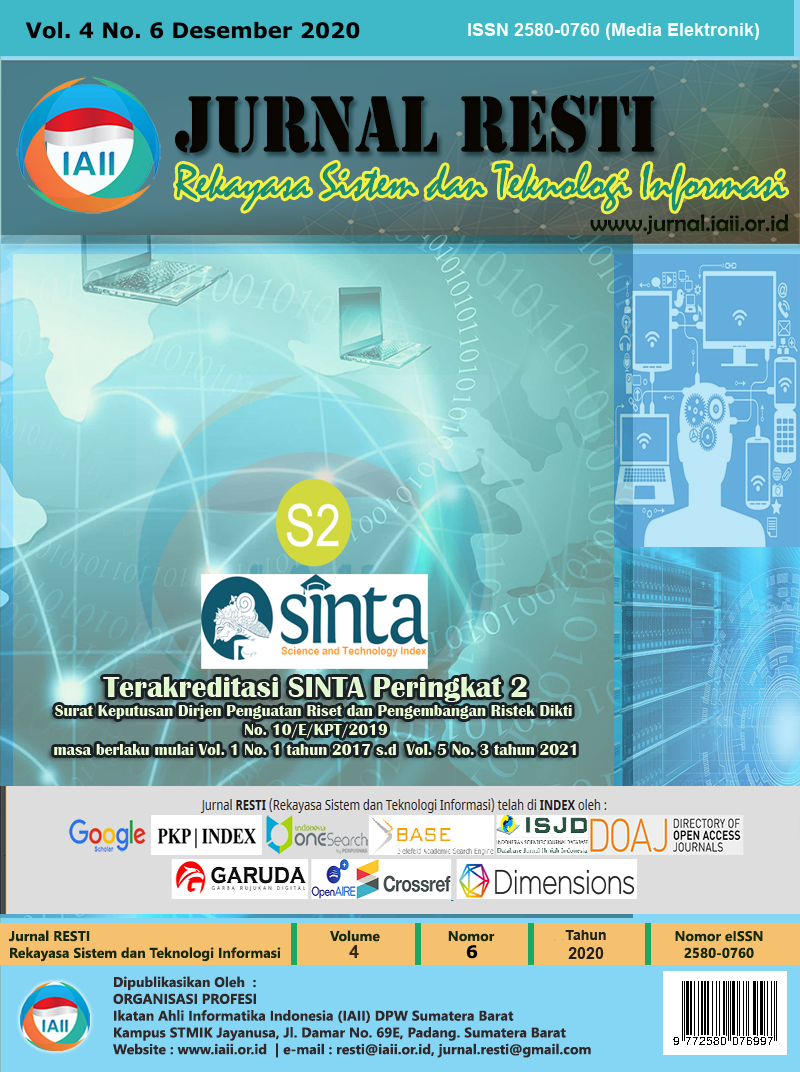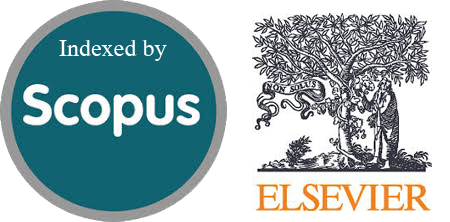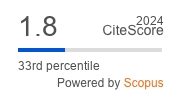Alat Deteksi Jatuh Berbiaya Murah Dengan Tracking Position Untuk Pasien Vertigo dan Sinkop
Low Cost Fall Detection Tool With Tracking Position For Vertigo and Syncope Patients
Abstract
In this study we propose a low-cost portable device to monitor the vertigo and syncope patients whether normal, dizziness or falls. The purpose of this study is design and manufactures a device using an accelerometer sensor to determining the condition of patients who are at risk of vertigo and syncope. The patient's condition is detected by accelerometer which read the values of the x, y and z axes to determine condition normal, dizzy, or fall. This device also uses a real time clock to remind the patient to take medication three times a day. The device outputs are LCD Oled, Voice, and SMS notification. If the patient condition is falls an SMS notification will be sent, the dizzy condition vertigo patient will press the panic button first and then an SMS notification will be sent. The results of tests carried out on the equipment can send SMS and phone calls at an angle of (50o - 70o) = Y (40o - 20o) = X, in a fainting state and falling. The test results of the navigation module prove that the GPS module can determine the exact location by moving the GPS module reading position to a small test point with an average of 2.97 meters.Downloads
References
D. Sura and S. Newell, “Vertigo-diagnosis and management in the primary care,” Br J Med Pr., vol. 3, no. 4, p. a351, 2010, [Online]. Available: http://www.bjmp.org/content/vertigo-diagnosis-and-management-primary-care.
P. Gnerre, C. Casati, M. Frualdo, M. Cavalleri, and S. Guizzetti, “Management of vertigo: From evidence to clinical practice,” Ital. J. Med., vol. 9, no. 2, pp. 180–192, 2015, doi: 10.4081/itjm.2015.437.
T. L. Thompson and R. Amedee, “Vertigo: A review of common peripheral and central vestibular disorders,” Ochsner J., vol. 9, no. 1, pp. 20–26, 2009.
S. K. Kidd, C. Doughty, and S. Z. Goldhaber, “Syncope (Fainting),” Circulation, vol. 133, no. 16, pp. e600–e602, 2016, doi: 10.1161/CIRCULATIONAHA.115.017308.
P. Müller-Barna et al., “TeleVertigo: Diagnosing Stroke in Acute Dizziness: A Telemedicine-Supported Approach,” Stroke, vol. 50, no. 11, pp. 3293–3298, 2019, doi: 10.1161/STROKEAHA.119.026505.
A. Moya et al., “Guidelines for the diagnosis and management of syncope (version 2009),” Eur. Heart J., vol. 30, no. 21, pp. 2631–2671, 2009, doi: 10.1093/eurheartj/ehp298.
M. Irmansyah, et al., “Low Cost Heart Rate Portable Device for Risk Patients with IoT and Warning System,” IEEE International Conference on Applied Information Technology and Innovation (ICAITI), pp. 46-49, 2018.
M. G. Ayoub, M. N. Farhan, and M. S. Jarjees, “Streaming in-patient BPM data to the cloud with a real-time monitoring system,” Telkomnika (Telecommunication Comput. Electron. Control., vol. 17, no. 6, pp. 3120–3125, 2019, doi: 10.12928/TELKOMNIKA.v17i6.13263.
M. Subito, M. Ikhlayel, and E. Setijadi, “Internet of things-based vital sign monitoring system,” Int. J. Electr. Comput. Eng., vol. 10, no. 6, pp. 5891–5898, 2020, doi: 10.11591/ijece.v10i6.pp5891-5898.
K. Kalaithasan, N. A. M. Radzi, and H. Z. Abidin, “Internet of things application in monitoring sick building syndrome,” Indones. J. Electr. Eng. Comput. Sci., vol. 12, no. 2, pp. 505–512, 2018, doi: 10.11591/ijeecs.v12.i2.pp505-512.
M. Irmansyah, E. Madona, and A. Nasution, “Design and application of portable heart rate and weight measuring tool for premature baby with microcontroller base,” Int. J. GEOMATE, vol. 17, no. 61, pp. 195–201, 2019, doi: 10.21660/2019.61.ICEE12.
S. Trivedi and A. N. Cheeran, “Android based health parameter monitoring,” Proc. 2017 Int. Conf. Intell. Comput. Control Syst. ICICCS 2017, vol. 2018-Janua, pp. 1145–1149, 2018, doi: 10.1109/ICCONS.2017.8250646.
Yuhefizar, A. Nasution, R. Putra, E. Asri, and D. Satria, “IoT: Heart Rate Monitoring Tool Using Android with Alert Messanger Telegram System,” IOP Conf. Ser. Mater. Sci. Eng., vol. 846, no. 1, 2020, doi: 10.1088/1757-899X/846/1/012014.
M. Islam et al., “Android based heart rate monitoring and automatic notification system,” 5th IEEE Reg. 10 Humanit. Technol. Conf. 2017, R10-HTC 2017, vol. 2018-Janua, pp. 436–439, 2018, doi: 10.1109/R10-HTC.2017.8288993.
R. T. Hameed, O. A. Mohamad, O. T. Hamid, and N. Ţǎpuş, “Patient monitoring system based on e-health sensors & web services,” Proc. 8th Int. Conf. Electron. Comput. Artif. Intell. ECAI 2016, 2017, doi: 10.1109/ECAI.2016.7861089.
V. Jones, V. Gay, and P. Leijdekkers, “Body sensor networks for mobile health monitoring: Experience in Europe and Australia,” 4th Int. Conf. Digit. Soc. ICDS 2010, Incl. CYBERLAWS 2010 1st Int. Conf. Tech. Leg. Asp. e-Society, pp. 204–209, 2010, doi: 10.1109/ICDS.2010.41.
A. Jefiza, E. Pramunanto, H. Boedinoegroho, and M. H. Purnomo, “Fall detection based on accelerometer and gyroscope using back propagation,” Int. Conf. Electr. Eng. Comput. Sci. Informatics, vol. 2017-December, no. September, pp. 19–21, 2017, doi: 10.1109/EECSI.2017.8239149.
Y. Lee, H. Yeh, K. H. Kim, and O. Choi, “A real-time fall detection system based on the acceleration sensor of smartphone,” Int. J. Eng. Bus. Manag., vol. 10, pp. 1–8, 2018, doi: 10.1177/1847979017750669.
D. Aphairaj, M. Kitsonti, and T. Thanapornsawan, “Fall detection system with 3-axis accelerometer,” J. Phys. Conf. Ser., vol. 1380, no. 1, 2019, doi: 10.1088/1742-6596/1380/1/012060.
M. Mubashir, L. Shao, and L. Seed, “A survey on fall detection: Principles and approaches,” Neurocomputing, vol. 100, pp. 144–152, 2013, doi: 10.1016/j.neucom.2011.09.037.
A. Hakim, M. S. Huq, S. Shanta, and B. S. K. K. Ibrahim, “Smartphone Based Data Mining for Fall Detection: Analysis and Design,” Procedia Comput. Sci., vol. 105, no. December 2016, pp. 46–51, 2017, doi: 10.1016/j.procs.2017.01.188.
F. Farid and Y. Yunus, “Analisa Algoritma Haversine Formula Untuk Pencarian Lokasi Terdekat Rumah Sakit Dan Puskesmas Provinsi Gorontalo,” Ilk. J. Ilm., vol. 9, no. 3, pp. 353–355, 2017, doi: 10.33096/ilkom.v9i3.178.353-355.
Copyright (c) 2020 Jurnal RESTI (Rekayasa Sistem dan Teknologi Informasi)

This work is licensed under a Creative Commons Attribution 4.0 International License.
Copyright in each article belongs to the author
- The author acknowledges that the RESTI Journal (System Engineering and Information Technology) is the first publisher to publish with a license Creative Commons Attribution 4.0 International License.
- Authors can enter writing separately, arrange the non-exclusive distribution of manuscripts that have been published in this journal into other versions (eg sent to the author's institutional repository, publication in a book, etc.), by acknowledging that the manuscript has been published for the first time in the RESTI (Rekayasa Sistem dan Teknologi Informasi) journal ;








